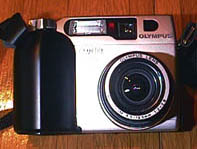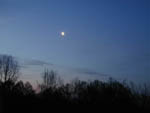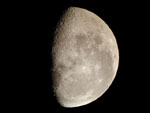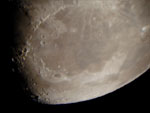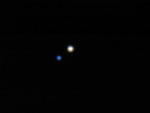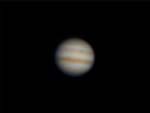 |
A Jupiter image created by composing 14 shots. Two dimmed stripes of NEB and SEB can be detected clearly.
And you can detect a very dimmed black spot on right-hand side of SEB (upper stripe of Jupiter), it's shadow of Io, one of Galileian satellites.
Taken at Tokyo.
Sep 18 2000, 25:04 to 25:07 JST, 1/10 sec. exp., f=38.2mm F2.8
VIXEN 20cm(7.9") VISAC, afocal method with LV12mm eyepiece
Synthesized focal length:5730mm (equivalent 30700mm in 35mm film format)
CCD sensitivity: ISO100
14 flames composed, tone level adjusted & unsharp masking processed
|
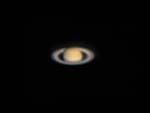 |
Saturn image taken with same method of Jupiter above.
You can see Saturn's shadow on the ring and the Cassini's division etc. because small-sized CCD chip can detect the image only with shutter speed faster than 1 sec.
Taken at Tokyo.
Sep 18 2000, 25:10 to 25:14 JST, 1/4 sec. exp.Cf=38.2mm F2.8
VIXEN 20cm(7.9") VISAC, afocal method with LV12mm eyepiece
Synthesized focal length:5730mm (equivalent 30700mm in 35mm film format)
CCD sensitivity: ISO100
20 flames composed, tone level adjusted & unsharp masking processed |
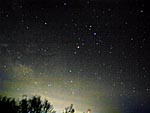 |
An experimental shot of a constellation of Scorpius with 16 seconds exposure time. The image shows you the Milky Way, color of Antares and shape of constellation.
A little bit noisy maybe because the CCD sensitivity gained up to ISO 400. Taken at Ooizumi vil., Yamanashi pref.
Apr 29 2000, 0:35 JST, 16 sec. exp.,
f=6.6mm F2.0
CCD sensitivity: ISO400
2x2 binned 3 flames composed, tone level adjusted
|
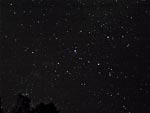 |
W-shaped Cassiopeia has been taken with a focal length of 70mm (converted into 35mm film format).
Uncountable fine stars can be detected because of a constellation bathed in the autumnal Milky Way. Taken at Ooizumi vil., Yamanashi pref.
Jun 4 2000, 2:42 JST, 16 sec. exp.,
f=13.1mm F2.2
CCD sensitivity: ISO400
3 flames composed, tone level adjusted
|
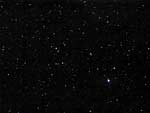 |
A shot of Lyra with a focal length of 105mm converted into 35mm film format.
In spite of a bit slow F number of 2.8 compared with F2.0 in wide-angle side, this camera can record the finest stars of 9th magnitude or so.
Taken at Ooizumi vil., Yamanashi pref.
Jun 4 2000, 2:26 JST, 16 sec. exp.,
f=19.1mm F2.8
CCD sensitivity: ISO400
3 flames composed, tone level adjusted |
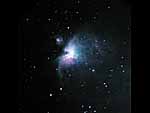 |
A collimated image of the Great Orion Nebula M42. Though any noise-reduction process didn't be performed, fairly dimmed part of M42 have been detected.
Taken at Ooizumi vil., Yamanashi pref.
Nov 18 2000, 22:33 JST, 16 sec. exp., f=6.6mm F2.0
TAKAHASHI 12.5cm(4.9") fluorite refractor, afocal method with LV25mm eyepiece
Synthesized focal length:264mm (equivalent 1420mm in 35mm film format)
CCD sensitivity: ISO400
2x2 binned 7 flames composed, tone level & curve adjusted
|
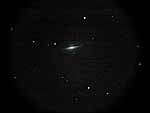 |
An image of a galaxy of M104 (Sombrero Nebula) in Virgo. The central dark lane of M104 has appeared by binned multi-flame composing process. Taken at Ooizumi vil., Yamanashi pref.
May 11 2001, 22:46 JST, 16 sec. exp., f=6.6mm F2.0
Meade 25cm(10") Schmidt-Cassegrain, afocal method with LV25mm eyepiece
Synthesized focal length:660mm (equivalent 3544mm in 35mm film format)
CCD sensitivity: ISO400
2x2 binned 8 flames composed, tone level & curve adjusted |
